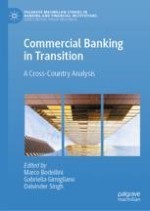2024 | OriginalPaper | Buchkapitel
2. Intermediaries’ Model in Banking and Finance and the Treatment of Fintech in the European Union: A Critical Approach
verfasst von : Patrick Barban
Erschienen in: Commercial Banking in Transition
Aktivieren Sie unsere intelligente Suche, um passende Fachinhalte oder Patente zu finden.
Wählen Sie Textabschnitte aus um mit Künstlicher Intelligenz passenden Patente zu finden. powered by
Markieren Sie Textabschnitte, um KI-gestützt weitere passende Inhalte zu finden. powered by
